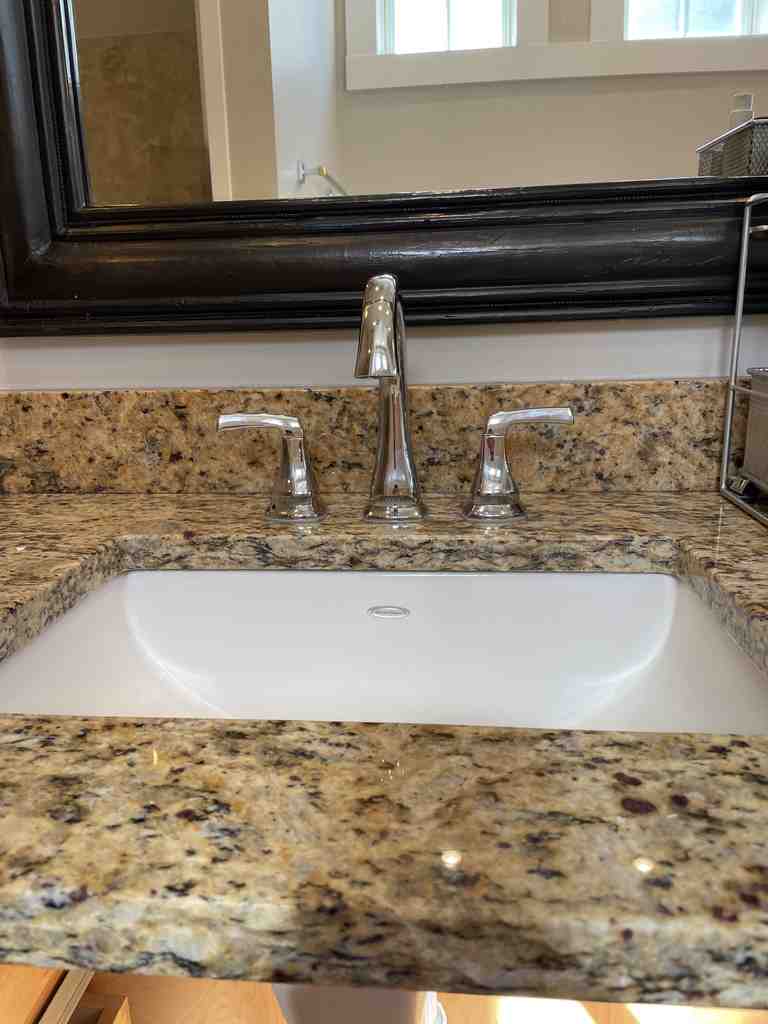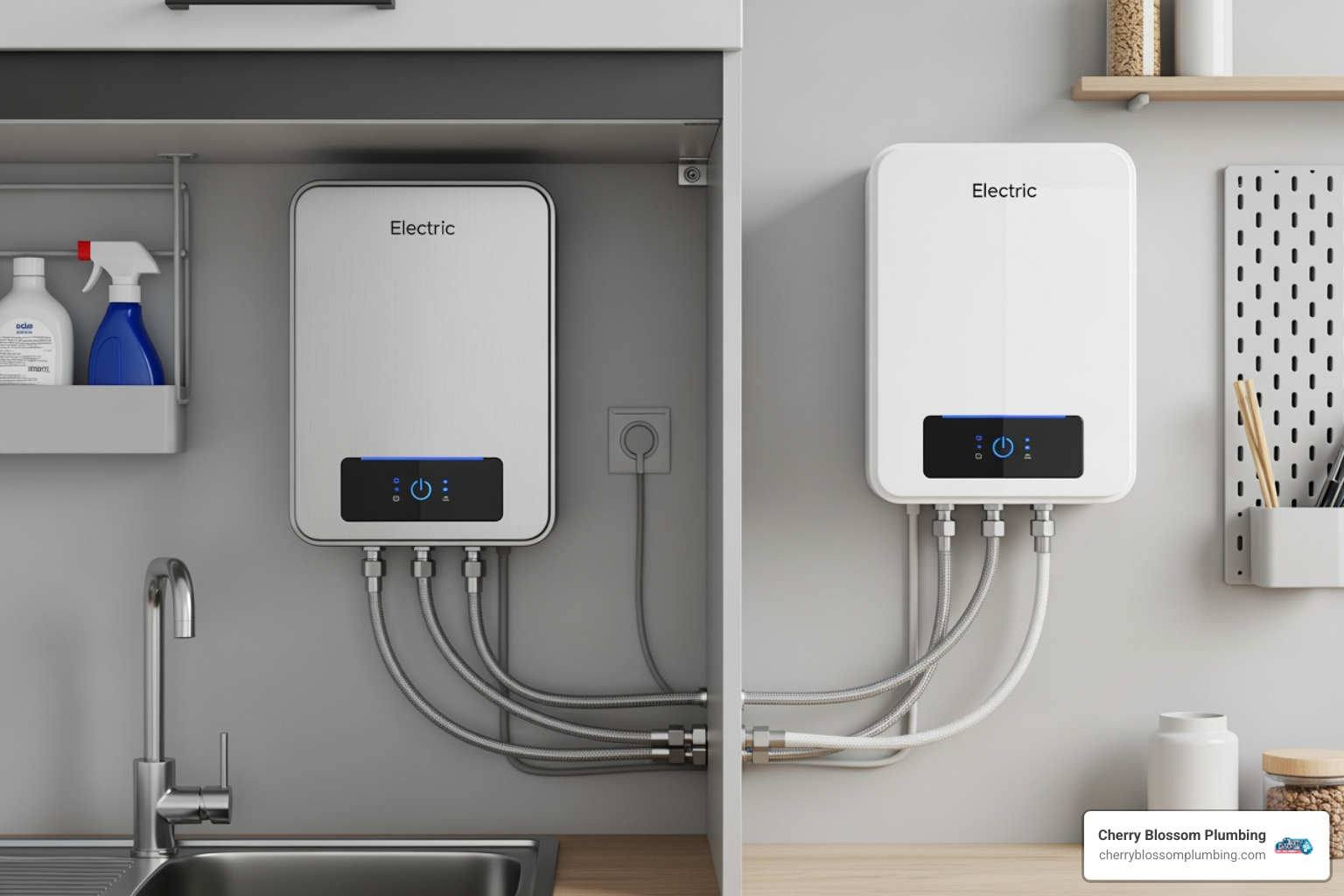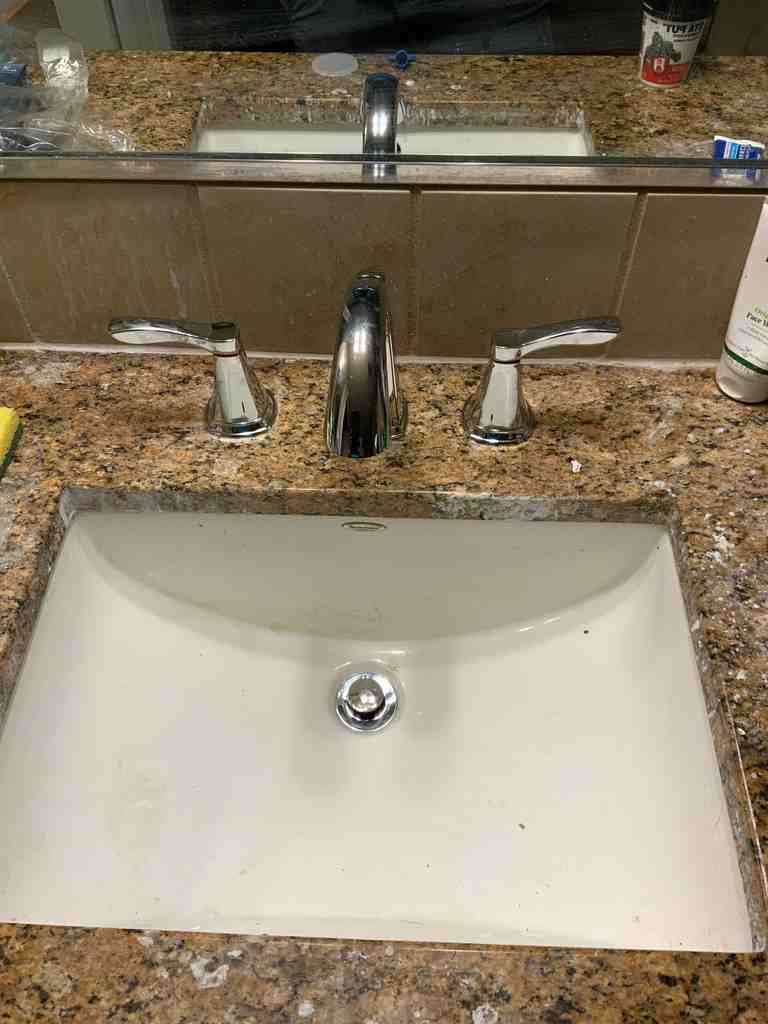
That Unmistakable Smell From Your Sink
When you need to clean p trap smell issues, you're tackling a common plumbing problem. Here's what you need to know:
Quick Solutions for P-Trap Smells:
- Run water in unused drains to refill dry P-traps.
- Use baking soda and vinegar for a natural clean.
- Remove debris like hair and gunk from the trap.
- Check for leaks under the sink.
- Call a pro for persistent or complex issues.
That foul drain odor is often a sign your P-trap isn't working. This U-shaped pipe holds water to block sewer gas from entering your home. When that water barrier fails, you'll smell it.
Most P-trap smell problems have straightforward DIY solutions. The most common culprits are a dry P-trap from infrequent use or a buildup of hair, soap scum, or food particles that breed bacteria. However, persistent odors might signal bigger issues like blocked vents or damaged pipes. Knowing when to call for professional help can save you time and frustration.
I'm Amanda Casteel of Cherry Blossom Plumbing, and I've helped countless Arlington homeowners solve their drain odor problems. Whether you need to clean p trap smell issues with simple maintenance or require professional intervention, understanding your plumbing is the first step to a fresh-smelling home.
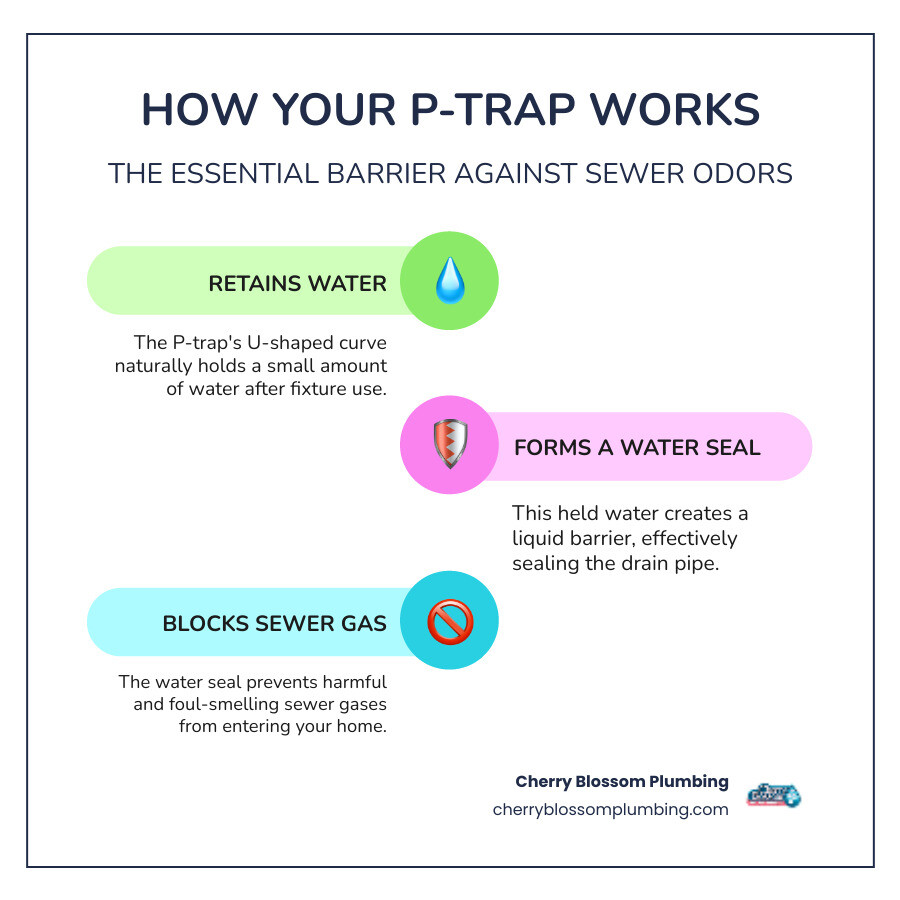
What is a P-Trap and Why Does It Smell?
A P-trap is the U-shaped pipe under every sink, tub, and shower in your home. Its curve holds a small pool of water—the water seal—that acts as a barrier, blocking harmful sewer gases from coming up the drain.
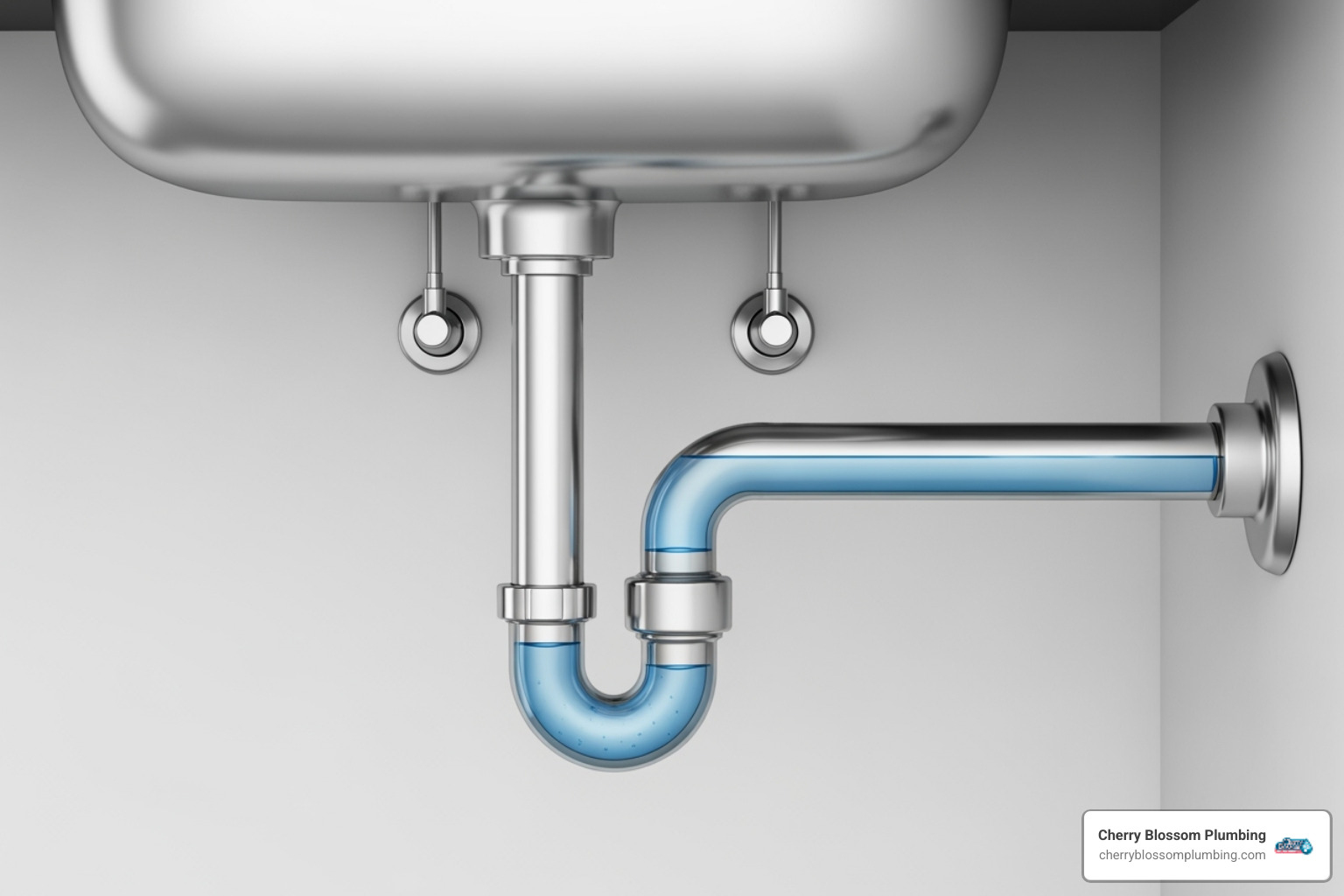
When that water seal is gone or compromised, you'll smell sewer gas. This gas mixture contains hydrogen sulfide, which is responsible for the distinct rotten egg stench. P-traps are effective, but several things can cause them to fail, including evaporation from disuse or clogs from hair and soap scum that create a slimy, odor-causing biofilm. Understanding how your P-trap works is the first step to keeping smells away. For more details, check out our Drain Cleaning Services Explained.
Common Causes of P-Trap Odors
Several common issues cause P-trap odors:
- Dry Trap from Disuse: Water in the trap evaporates over time, especially in rarely used guest bathrooms or basement floor drains. In our climate, a trap can dry out in 3-5 months.
- Clogs: Grease, food, hair, and soap scum build up in the pipe, creating a smelly blockage.
- Biofilm and Bacteria Growth: This slimy layer of bacteria thrives on the gunk in your drain, producing foul odors.
- Improper Venting: Blocked or poorly installed plumbing vents can create a siphoning effect that pulls water out of the trap, breaking the seal.
Is Sewer Gas Dangerous?
Sewer gas isn't just unpleasant; it can be hazardous. It contains gases like hydrogen sulfide and methane. Low-level exposure to hydrogen sulfide can cause headaches, dizziness, and nausea. Methane is flammable, though high concentrations are rare in homes.
The health risks from prolonged exposure are real, especially for children, the elderly, and those with respiratory conditions. Addressing P-trap odors promptly is a matter of health and safety. For more details, health authorities offer comprehensive information on harmful sewer gases. A functioning P-trap is your first line of defense.
Diagnosing the Source of the P-Trap Smell
Before you can clean p trap smell issues, you need to play detective. A systematic approach will save you time and frustration. Start by pinpointing which drain the odor is coming from—a sink, shower, or floor drain.

Then, look for these telltale signs of a malfunctioning P-trap:
- Persistent sewer odors that don't go away with cleaning.
- Smells that appear after a fixture is unused for a while.
- Gurgling sounds when water drains, which can indicate a venting problem.
- Slow drainage, a sign of a clog that's breeding bacteria.
- Visible leaks or water stains under the sink around the P-trap.
Signs in Different Drains
Odors can manifest differently depending on the drain:
- Kitchen Sinks: Food particles and grease from a garbage disposal can cause odors. The smell may worsen when you run the disposal or hot water. Learn more about Common Issues With Your Kitchen Sink Drain.
- Shower and Tub Drains: Hair and soap scum create clogs and smelly biofilm. The odor is often worse in warm, humid conditions.
- Floor Drains: Located in basements or laundry rooms, these drains are rarely used and are prime candidates for drying out due to evaporation.
- Toilet Odors: A persistent sewer smell around a toilet often points to a failed wax ring seal at its base, not the internal P-trap. Look for rocking or water pooling at the base.
How to Clean P-Trap Smell: A Step-by-Step Guide
Once you've identified the source, you can tackle the smell. Most P-trap odors can be solved with these DIY methods, starting with the easiest fixes.

Step 1: Fix a Dry P-Trap
If the trap is dry from disuse, simply refill it.
- Sinks & Tubs: Run water for about a minute.
- Toilets: Flush once or twice.
- Floor Drains: Pour about a gallon of water directly into the drain.
For drains that sit unused for months (like in a vacation home), add a tablespoon of mineral oil after the water. The oil floats on top and slows evaporation, keeping the seal intact longer.
Step 2: DIY Methods to Clean P-Trap Smell with Household Items
If refilling the trap doesn't work, clean out the gunk and biofilm causing the odor.
- Flush with Hot Water: Pour very hot tap water down the drain to loosen grease. Caution: Avoid boiling water if you have PVC pipes, as it can cause damage.
- Use Baking Soda & Vinegar: Pour one cup of baking soda down the drain, followed by one cup of white vinegar.
- Wait: Cover the drain and let the mixture fizz and work for at least 30 minutes (or overnight for tough odors).
- Flush Again: Rinse the drain thoroughly with hot water.
This natural method is effective for minor buildups. For more tips, see our guide on how to Clean Sink Drains Effectively.
Step 3: Physically Clean P-Trap Smell by Removing Debris
For stubborn clogs of hair and debris, you may need to physically clean the trap.
- Prepare: Place a bucket under the P-trap to catch water and debris.
- Remove the Trap: Loosen the slip nuts on both ends of the curved pipe. A wrench may be needed, but be gentle. Water will spill out as you remove it.
- Clean: Use a bottle brush or a bent wire hanger to scrub the inside of the trap and remove all gunk. Also, clean the vertical pipe (tailpiece) coming down from the sink.
- Reassemble: Reattach the P-trap, hand-tightening the nuts first, then giving them a gentle final turn with a wrench. Do not overtighten.
- Check for Leaks: Run the water and check for any drips at the connections.
If clogs persist deeper in the line, you may need professional drain snaking. Our team has mastered Effective Techniques to Snake a Drain. Learn about our process in How Our Technicians Clean Sink Drain.
Advanced Problems and Preventing Future Odors
If DIY cleaning doesn't eliminate the smell, the problem may be more advanced, such as an issue with your home's plumbing vents. Regular maintenance is the best way to prevent future odors. Explore Our Comprehensive Plumbing Services to keep your system in top shape.
The Role of Plumbing Vents
Plumbing vents are pipes, typically extending through the roof, that allow air into your drain system. This balances air pressure, ensuring water flows smoothly and preventing the water in your P-traps from being siphoned out. They also allow sewer gases to escape safely outside.
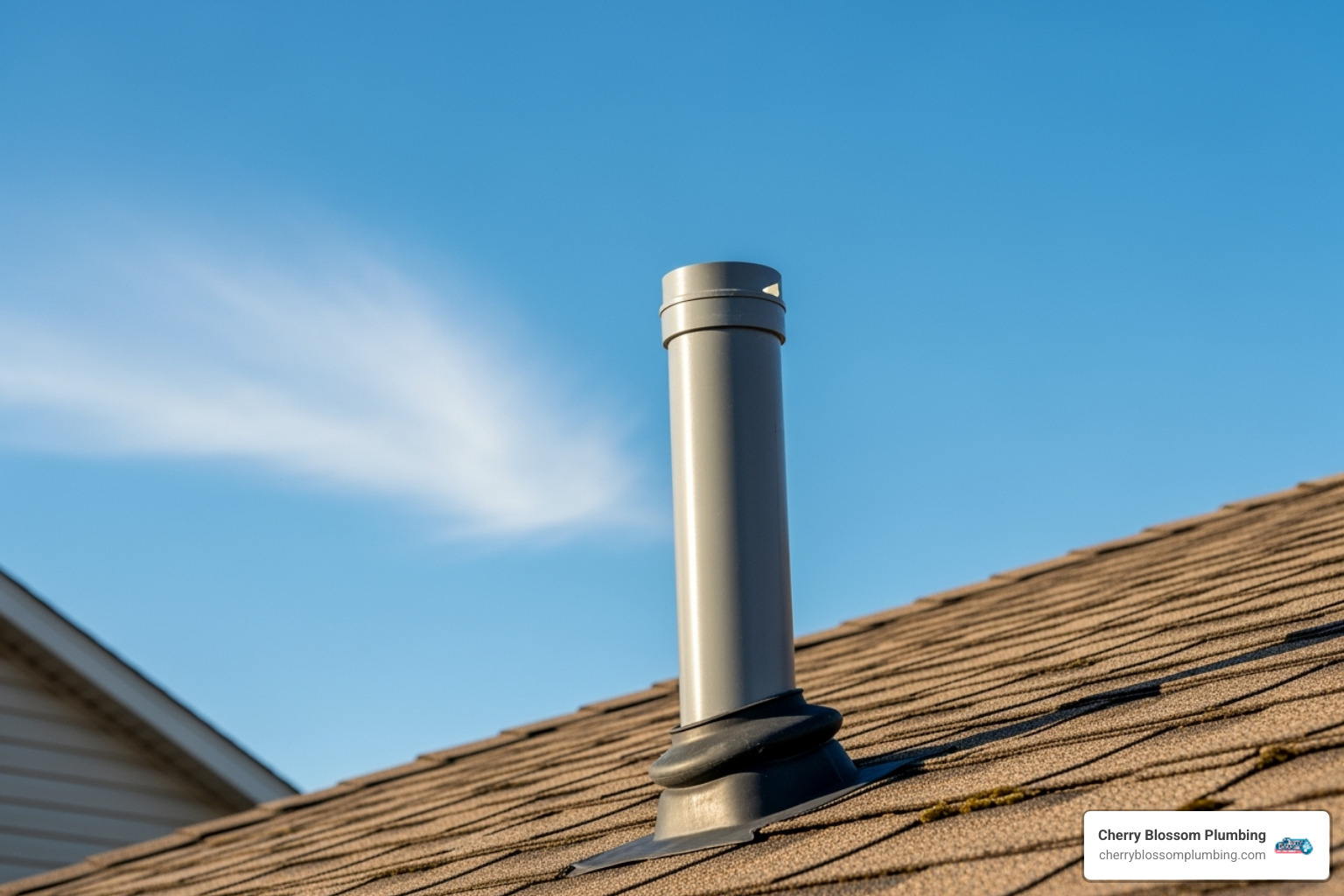
Signs of a blocked vent include:
- Persistent sewer smells, even with a full P-trap.
- Gurgling sounds from drains.
- Slow drainage in multiple fixtures.
Vents can be blocked by leaves, nests, or debris. Clearing a roof vent is dangerous and best left to a professional plumber who can safely diagnose and clear the obstruction.
When to Call a Professional Plumber
While many P-trap smells are DIY fixes, it's time to call a professional when:
- The odor persists after you've tried cleaning and refilling the trap.
- The smell is strong and present throughout your home.
- Multiple drains are slow, backing up, or smell bad, suggesting a main sewer line clog.
- You have recurring clogs or odors despite regular maintenance.
- You hear gurgling drains, a sign of a blocked vent.
- You suspect a cracked pipe or an improperly installed P-trap.
If you have a Clogged Drain in Arlington VA or are unsure of the cause, our team at Cherry Blossom Plumbing can help. We serve homeowners across Northern Virginia, including Arlington, Fairfax, and Alexandria, providing expert diagnosis and solutions.
Frequently Asked Questions about P-Trap Smells
Here are answers to some of the most common questions we get about P-trap smells.
How do garbage disposals affect P-trap smells?
Food particles and grease can stick to your garbage disposal's blades and the P-trap below, causing odors as they decompose. To prevent this, always run cold water for 15-20 seconds after use to flush debris completely through the pipes. For a deeper clean, grind a tray of ice cubes, followed by citrus peels (lemon or orange), to clean the blades and deodorize the unit.
Can a P-trap be installed wrong?
Yes, a P-trap can be installed incorrectly, leading to persistent odors. Common mistakes include:
- Incorrect Slope: The pipes leading to and from the trap must be angled correctly for proper flow.
- Missing Trap: Sometimes a trap is omitted entirely, giving sewer gas a direct path into your home.
- Using an S-Trap: Older S-traps are prone to siphoning their water seal and are no longer up to code. Modern P-traps are required.
- Improper Venting: Without a proper vent, the water seal can be siphoned out.
- Leaks: Loose connections can allow the water seal to slowly drip away.
If you suspect an installation issue, a professional inspection is recommended.
How long does it take for a P-trap to dry out?
The time it takes for a P-trap to dry out varies. In a humid climate like ours, it can take 3-5 months. In dry indoor air (especially in winter), it could be just a few weeks. Drains in guest bathrooms, basements, or vacation homes are most vulnerable. To prevent this, make it a monthly habit to run water for a minute in all rarely used drains to refill the trap.
Get Your Drains Smelling Fresh Again
You don't have to live with that mysterious sewer smell. As we've covered, your P-trap is the simple but crucial barrier against sewer gases. Most odor issues come from a dry trap due to evaporation, clogs from hair and soap, or smelly biofilm buildup.
Luckily, the fixes are often simple. Running water in unused drains, using a baking soda and vinegar solution, or physically cleaning the trap will solve most problems. Regular maintenance is your best defense—make it a monthly habit to run water in all drains and clean your garbage disposal.
However, if the smell persists despite your efforts, it could signal a more complex issue like a blocked plumbing vent, an improperly installed trap, or a main sewer line problem. When you hear gurgling drains or the smell won't go away, it's time to call a professional.
At Cherry Blossom Plumbing, we've solved the trickiest drain mysteries for homeowners across Northern Virginia. Our family-owned team provides "WOW factor" service, whether it's a simple dry P-trap in Arlington or a complex venting issue in Falls Church. We know a fresh-smelling home is essential for your family's comfort and health.
Don't let stubborn drain odors linger. Contact us for expert drain cleaning services and let our plumbers restore that fresh, clean feeling to your home!
Customer Testimonials
Cherry Blossom Plumbing has consistently provided top-notch service, ensuring every issue is resolved efficiently and professionally.






